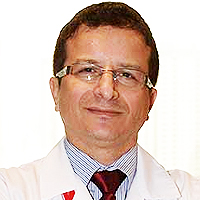Psychoanalysis of the doctrine of acute pneumonia
Published on: 29th April, 2021
OCLC Number/Unique Identifier: 9028067876
It is difficult to predict how the founder of psychoanalysis, Sigmund Freud, would react to an attempt to link his theory and the method of treating mental disorders based on it [1], with such a purely physical disease as acute pneumonia (AP). It is unlikely that such an innovation could cause full approval and support. However, in this context, we are not talking about psychoanalysis as a therapeutic method for AP. In this case, only the diagnostic features of this technique are of interest
Dependence of the results of treatment of acute pneumonia on the doctrine of the disease
Published on: 16th March, 2018
OCLC Number/Unique Identifier: 7493657923
Treatment of various inflammatory processes, including acute pneumonia(АP), over the past decades is identical and does not reflect the specifics of a particular disease. The basis of such treatment is «antibiotics alone». The need for additional therapeutic efforts is realized by the use of General therapeutic techniques, regardless of the diagnosis. This does not take into account the important fact that the localization of inflammation not only determines its clinical picture,but,above all,the mechanisms of influence on other organs and systems of the body.
Acute pneumonia: Facts and realities against etiological hypotheses and beliefs
Published on: 4th February, 2019
OCLC Number/Unique Identifier: 7997795397
Modern AP concepts are focused exclusively on the infectious nature of the disease and the presence of certain pathogens. This belief determines the principles of treatment, the lack of effectiveness of which remains a concern of health professionals. The article presents a fragment of the study devoted to the etiology of АP. 994 children aged 4 months to 14 years with various forms of so-called community-acquired pneumonia were examined and treated. Bacteriological examination of the material from the inflammation zone was carried out in 542 patients. Experiments on modeling АP and its pleural complications were performed on 44 animals. The obtained results and critical analysis of the literature data and scientific facts allow us to consider bacteria only as one of the etiological elements of АP, which is not mandatory in all cases of the disease. Scientifically based revision of existing ideas about the causes and mechanisms of AP development leads to the need for a radical change in the principles of treatment and is a strategic direction in solving the problem.
Angioarchitectonics of acute pneumonia
Published on: 7th February, 2019
OCLC Number/Unique Identifier: 7997970981
The article presents the results of x-ray anatomical studies of 56 whole lung preparations, which were carried out immediately after the autopsy of children who died from АP. In 47 cases it was carried out the contrast of the vessels and in 9 cases the bronchial tree. The results allowed to clarify some details of the pathogenesis of АP and were additional arguments in support of the new doctrine of the disease.
Do you really want to improve the results of treatment for acute pneumonia?
Published on: 19th February, 2019
OCLC Number/Unique Identifier: 8163602149
The question raised in the title of this letter is a natural consequence of the findings and conclusions that have been growing steadily in recent years regarding the results of treatment for acute pneumonia (АР). If you look at the publications of recent years in this field of medicine, it turns out that one of the main obstacles to progress in improving the results of treatment of this disease is the lack of appropriate methods for determining the pathogen. Thus, the lack of timely diagnostic information about the etiology of the disease excludes the possibility of targeted antibiotic therapy. In recent years, such regrets have become more and more relevant, playing the role of the main explanation for treatment failures .Continuing to narrow the unidirectional view of the problem and to pay attention only to the microbial factor as the main cause of the disease, such views are in fact another illusion, which, even in the case of its hypothetical implementation, will not make significant changes in the overall trend. This statement is easy to verify if you rely on well-known facts, and not use as arguments assumptions and guesses.
The effect of respira inhalation on the oxygen saturation of a patient’s blood (SpO2): A Case Report
Published on: 7th April, 2023
Introduction: Infection and the accompanying inflammation of the upper and lower respiratory tract, influenza and COVID-19, are among the deadliest diseases in human life in the world. Due to the high emergence of bacterial resistance to antibiotics, we strive to find alternatives to contribute to the treatment by using a new formulation of a mixture of six essential oils in the form of a drop called Respira drops for a therapeutic approach to the upper or lower parts of the respiratory system infection, either by inhalation or sniffing, or by touching it with the body in the form of a skin patch on the head, neck, or chest. The present study suggested that natural essential oils may act as a prophylactic and therapeutic agent in respiratory tract hypoxia, inflammation, and bacterial and viral infection (influenza and COVID-19).Case presentation: A 62-year-old Yemeni man was suffering from acute pneumonia and had used antibiotics his condition improved, but he was suffering from difficulty breathing and stayed on the use of oxygen at home for more than three months, and his SpO2 ranged between 75 to 85 and he also suffered from an abdominal hernia, and he went for a procedure Surgery, and when the SpO2 was measured at 86, the surgery was not completed as a result, so he used Respira drops by inhalation and by steam for twenty-four hours and the next day he went to the hospital and the SpO2 was measured 96 and the operation was performed and he continued using Respira for two weeks three times per day and his condition improved completely.Conclusion: The present case study shows the excellent therapeutic response for Respira drops as inhalation and smiling three times per day increased SpO2 levels which reflect the anti-inflammatory, antimicrobial and anti-viral effects (influenza and COVID-19).
Pathogenesis is the Basis of the Doctrine of Acute Pneumonia and the Principles of its Treatment
Published on: 17th November, 2023
Modern medicine has achieved phenomenal success in many areas, turning into a visual and tangible reality the embodiment of some phenomena that in previous years could only be read in works of science fiction.
The Importance of the Concept of Acute Pneumonia for Choosing the Principles of its Treatment and Results
Published on: 30th January, 2024
Over the past many decades, scientific research and practical efforts in the field of acute nonspecific inflammation of the lung tissue have been aimed at early detection of the pathogen and its suppression.
Why is Pain not Characteristic of Inflammation of the Lung Tissue?
Published on: 7th March, 2024
The article presents materials that make it possible to understand the reason for the absence of one of the classic signs of inflammatory processes in patients with acute pneumonia. The peculiarities of the functional significance of the lungs for the body are the reason that in the case of inflammation in the tissues of the organ, nature has provided for the presence of a more important adaptive mechanism instead of pain as a signal sign. Understanding the causes of the absence of pain in pneumonia in the initial period, which is most responsible for timely and effective care for these patients, allows us to look at the pathogenesis of the disease from a new point of view, which is of fundamental importance for the correction and selection of pathogenetic means of care.
















